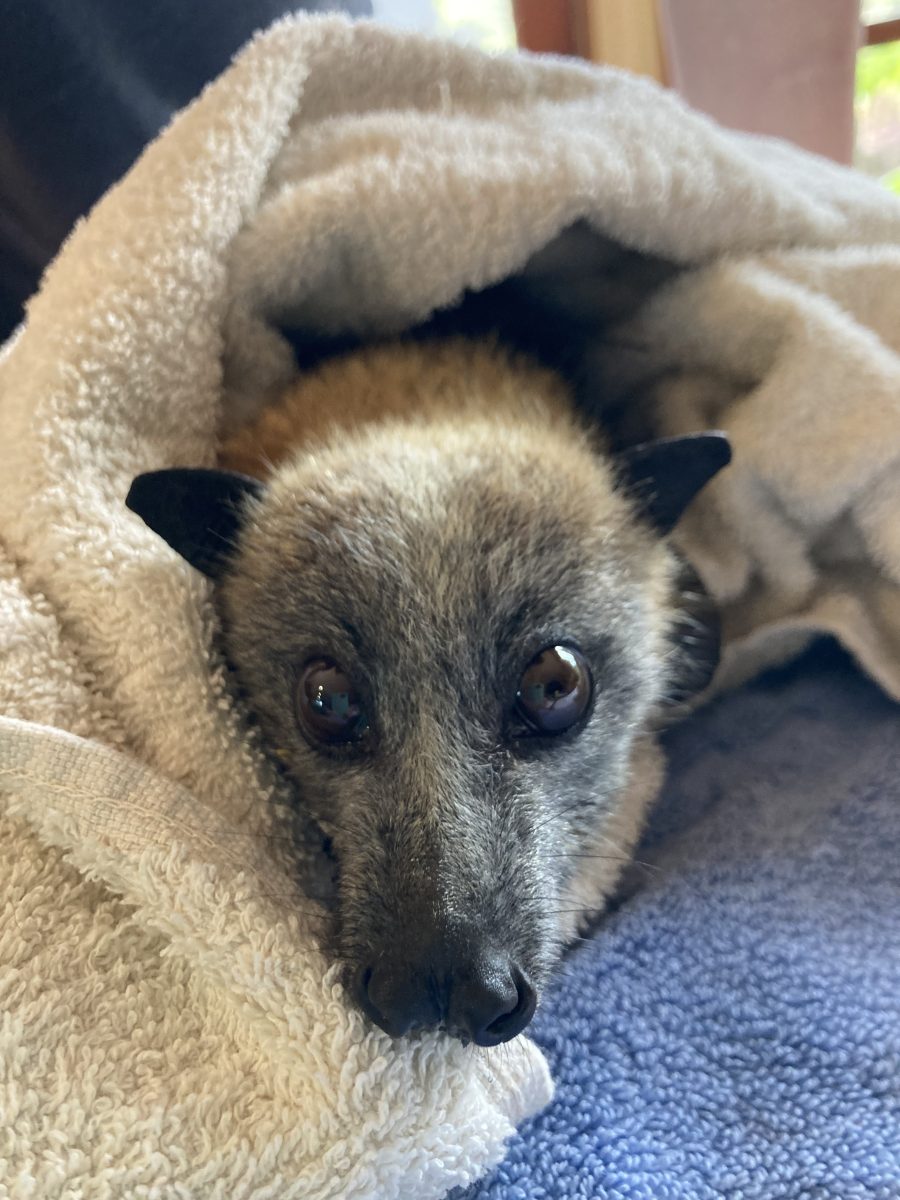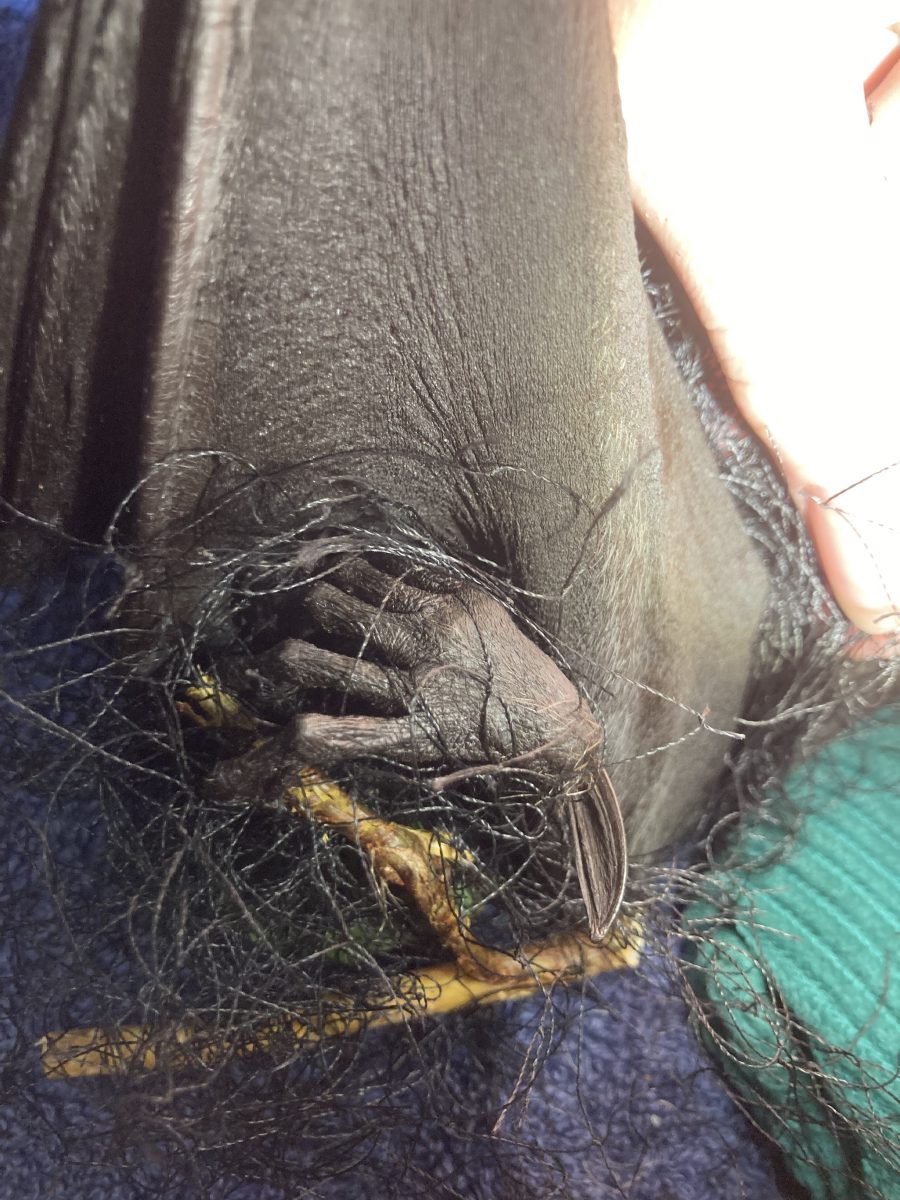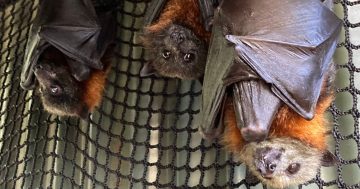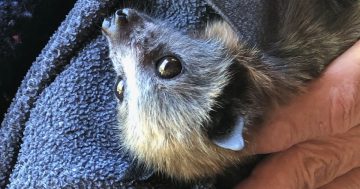
One of the lucky ones – this baby flying fox was saved by ACT Rescue and is now in care. Photo: Clare Wynter.
Canberrans have been urged to help save the lives of vulnerable grey-headed flying foxes which have been caught in backyard fruit tree netting. Many of the mammals have suffered an agonising death.
ACT Wildlife volunteer flying fox coordinator Clare Wynter said the situation had now become desperate with more flocking to Canberra in search of food.
Ms Wynter, who has cared for injured flying foxes for the past four years, said the food shortage in Queensland and northern NSW had brought the foxes to Canberra in the greatest number on record. A large flock had already made the rhododendron garden at Regatta Point its new home.
She said of the 117 flying foxes rescued so far this season, 29 had been cut out of fruit tree netting while 49 were orphans coming into care. “Just in the last five days, we have rescued seven flying foxes from residents’ nets, one of which needed to be immediately euthanased.”
Compared to last year, ACT Wildlife had only rescued one bat from fruit tree netting by mid-February 2023 with 12 others rescued between March and May.
Ms Wynter said she’s had one flying fox in care for three months, such was its injuries – “they can eat 500 grams of fruit a day so it costs a bomb to keep them”.
“Flying foxes usually eat the blossom of eucalypts,” she said. “But because of the shortage up north, they’re coming down here in numbers we’ve never seen before – desperate for food.
“They love eucalypts because 25 per cent of it is pollen which gives them protein. They carry the pollen as they fly – which can be as far as 120km a day.
“They’re actually the big pollinators of the forest – and the trees the koalas live in. The large eucalypt forests would die or change dramatically without that pollination.”
ACT Government’s introduction last year of a net swap – outlawing the nets with large holes that native animals can get caught in and replacing them with more environmentally friendly ones – had helped, Ms Wynter said.
“The net swap has so far seen more than 350 wildlife nets swapped for safer ones but more help is needed.”
She said because the increase in the number of flying foxes coming to Canberra was relatively recent, little research had been done on how many had died.

Why ACT Rescue wants these fruit tree nets banned – so flying foxes don’t get tangled up in them. Photo: Clare Wynter.
“We don’t know because we only get called out for the ones that are still alive,” she said. “But we do know that the ones that are coming into Canberra are of lower weight than previous years and more pups have fallen off their mums.
“We also know that as well as flying into the nets desperate for food, many of them have also been hit by cars or landed on electricity wires.
“It’s been a disaster of a year for them – and they’re already considered vulnerable on the threatened species list.”
Ms Wynter said she contacted the ACT Government to find out when legislation to outlaw the large netting would come in.
“It’s getting desperate now.”
She said if Canberrans saw a flying fox caught in netting, alone, or on the ground, it needed rescuing.
“But don’t touch it yourself, contact ACT Wildlife and we’ll send someone out.”














